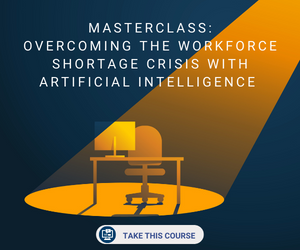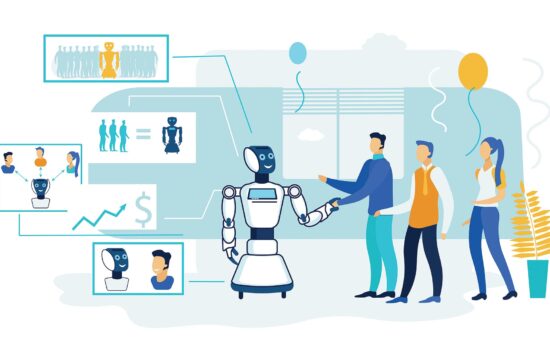Editor’s picks on:
Digital Transformation

April 2, 2024
GenAI dawns new era in Industry 4.0, says GlobalData
As the transformation towards Industry 4.0 reaches its peak, generative AI (genAI) is looking to redefine operational processes across diverse sectors.
Digital Transformation, Feature, Service Strategy
March 14, 2024
Where is the Return on Investment when it comes to remote service strategies?
Where is the Return on Investment when it comes to remote service strategies? At the December 2023 Copperrberg Service Academy, Izzy...
Digital Transformation, Feature, Service Strategy
March 7, 2024
The technology stack underpinning Konica Minolta’s remote service strategy
The technology stack underpinning Konica Minolta’s remote service strategy At the December 2023 Copperrberg Service Academy, Izzy...
Digital Transformation, Feature, Service Strategy
February 29, 2024
Do remote service strategies need to be different depending on the industry vertical they are being deployed into?
Do remote service strategies need to be different depending on the industry vertical they are being deployed into? At the December 2023...
Latest news and articles on:
Digital Transformation
Digital Transformation, Feature, Service Strategy
February 22, 2024
The common threads that have been successful in remote service have followed
The common threads that have been successful in remote service have followed At the December 2023 Copperrberg Service Academy, Izzy Sanchez...
Digital Transformation, Feature, Service Strategy
February 15, 2024
What were the drivers for adopting a remote first strategy for Konica Minolta?
Do we need different strategies for remote service when working with third-party field workforces? At the December 2023 Copperrberg Service...
Digital Transformation, Feature, Service Strategy
February 7, 2024
Do we need different strategies for remote service when working with third-party field workforces?
Do we need different strategies for remote service when working with third-party field workforces? At the December 2023 Copperrberg Service...
Digital Transformation, Feature, Service Strategy
January 25, 2024
The organizational structure Konica Minolta adopted when rolling out remote service
The organizational structure Konica Minolta adopted when rolling out remote service At the December 2023 Copperrberg Service Academy, Izzy...
Digital Transformation, Feature
November 30, 2023
Conclusion: Centralising Decentralisation for Next-Gen FSM Systems
Conclusion: Centralising Decentralisation for Next-Gen FSM Systems In this concluding feature in this series of article from a paper...
Digital Transformation, Feature
November 23, 2023
Envisioning Next-Gen Platform Capabilities for Centralizing Decentralization
Capabilities for Centralizing Decentralization Envisioning Next-Gen Platform Capabilities for Centralizing Decentralization In this article...
Premium Content: Digital Transformation
FSN PRO members can access our full premium content library including a huge range of white papers, research reports and in-depth interviews on the topic of digital transformation in field service.
Access all this and over a hundred and forty other resources in the FSN Premium library for £45 a month.
Popular news and features on:
Digital Transformation
Digital Transformation, Feature
November 16, 2023
Leveraging Modern Knowledge Management Tools within a Next-Gen FSM System
Leveraging Modern Knowledge Management Tools within a Next-Gen FSM System In this article from a series of features taken from a paper...
Digital Transformation, Feature
November 13, 2023
What have the Jetsons, Gartner and an ‘AI Wingman’ all got in common?
Dave Hart, Managing Partner at Field Service Associates blends the world of 50’s Cartoons, Advanced Service Strategies and AI and makes an awful lot of sense as he does so…
Digital Transformation, Feature
November 9, 2023
The Path Forward: Harmonizing Global Teams
The Path Forward: Harmonizing Global Teams The Path Forward: Harmonizing Global Teams The Path Forward: Harmonizing Global Teams In the...
Digital Transformation, Feature, FSM Technology, Service Strategy
November 7, 2023
Servitization Series: Conclusion and Reflective Points
Servitization Series: Conclusion and Reflective Points In this series of articles that are serialised from an exclusive new Field Service...
November 3, 2023
Coresystems Launches InsightLoop to Revolutionize Field Service Management with AI
With AI becoming an increasingly important factor in field service operations what impact could Coresystems new solution have on our industry?
Digital Transformation, Feature
November 2, 2023
The Challenges of Globalization and Centralization
The Challenges of Globalization and Centralization The Challenges of Globalization and Centralization In the relentless pursuit of...
Digital Transformation, Feature, FSM Technology, Service Strategy
October 26, 2023
Technology Requirements for Successful Servitization
Technology Requirements for Successful Servitization In this series of articles that are serialised from an exclusive new Field Service...
Digital Transformation, Feature
October 26, 2023
Centralization vs. Decentralization in Field Service: Navigating a New Era
Decentralization in Field Service: Navigating a New Era Decentralization in Field Service: Navigating a New Era Centralization vs....
Want more? Check out the archive for:
Digital Transformation





















